BY PATRICIA NEWMAN
I had the good fortune to work with a group of environmental educators who created the educator guide for Sharks Unhooked: The Adventures of Cristina Zenato, Underwater Ranger. (To download the educator guide, scroll down to Free Resources to download). They created an entire unit on overfishing so we understand why sharks are important to healthy ocean food webs.
The following lesson, the Ocean Food Web Web, is one of those lessons. It is actually a simulation and will get your students out of their chairs to experiment with different human effects on the food web.
Science and speaking/listening are integrated within this lesson along with critical thinking and interdependence. Have fun — and send me pictures if you use this lesson. Thanks!
Materials
- Yarn or string
- Species cards (see next pages – cut and copy as needed)
- Tape or clips
Engage
Begin with a brief discussion about what students know about food chains and food webs. Pose the question: “What happens if we remove one of the species from the ocean?”
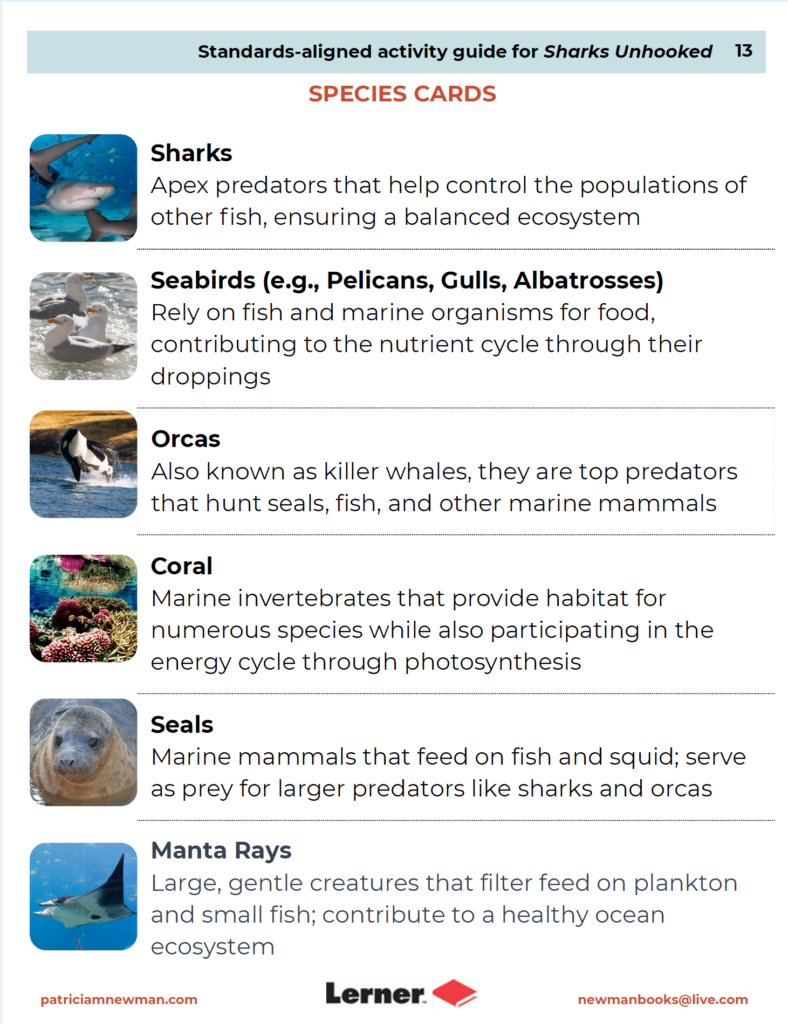
Explore
Role Assignment
- Distribute one species card to each student.
- Give the time to become acquainted with their species.
Building the Food Web
- Instruct students to stand in a circle.
- Have them use yarn to connect to the species they eat, forming a visual representation of the food web.
- Encourage students to think about the connections and relationships as they create the web.
Explain
- Discuss the roles of different species in the food web.
- Explain key terms: producers, consumers, and apex predators.
- Transition into the concept of overfishing and its potential impacts on the food web.
- Ask guiding questions to facilitate understanding:
- What would happen if a predator like tuna was overfished?
- How would that affect the smaller fish and the entire food web?
Elaborate
Simulating Overfishing
- Remove one species card (e.g., tuna) from the web and observe the changes.
- Discuss how removing this species affects other species connected to it.
- Encourage students to notice the “ripple effects” on the food web.
Group Discussion
- Discuss how the removal of one species can lead to overpopulation of its prey and the decline of other species.
- Discuss real-world examples of overfishing and its consequences on marine life.
Evaluate
Assess students’ understanding through participation in the activity and their written reflections.
Standards addressed
- NGSS 5-LS2-1: Develop a model to describe the movement of matter among plants, animals, decomposers, and theE environment.
- CCSS.ELA-LITERACY.RI.5.7: Draw on information from multiple print or digital sources, demonstrating the ability to locate an answer to a question quickly or to solve a problem efficiently.
Featured image credit: “Shark” by bryan scott photography is licensed under CC BY-NC-ND 2.0.


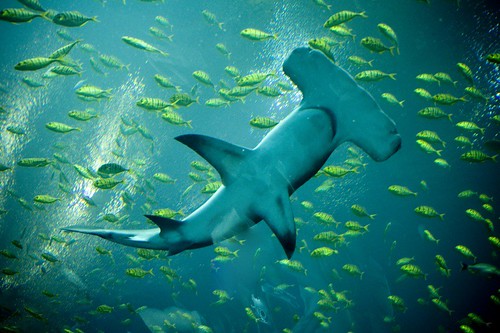



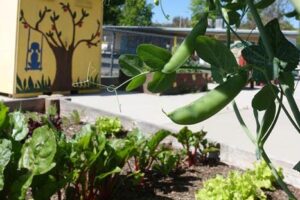
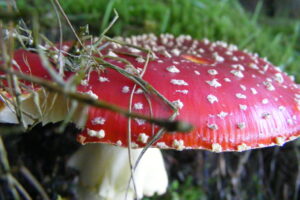

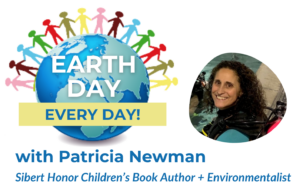
Leave a Reply
Your email is safe with me.